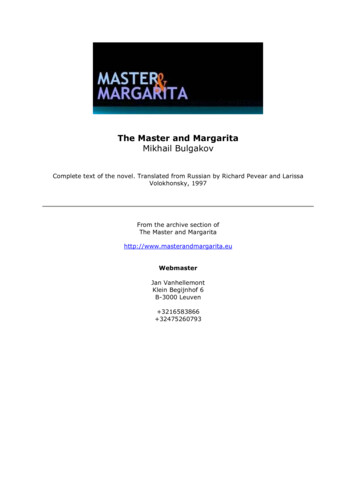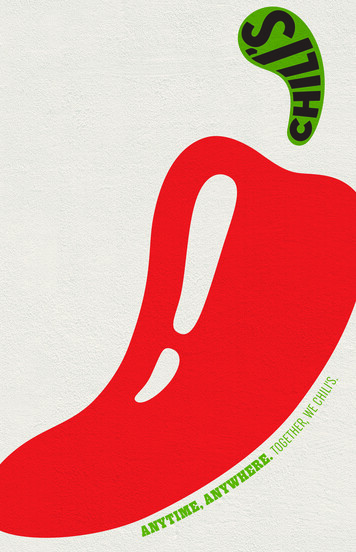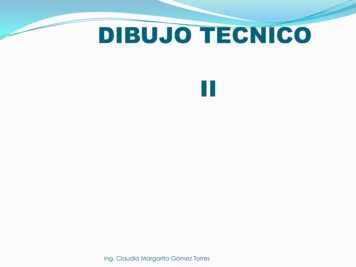
Transcription
The Master and MargaritaMikhail BulgakovComplete text of the novel. Translated from Russian by Richard Pevear and LarissaVolokhonsky, 1997From the archive section ofThe Master and Jan VanhellemontKlein Begijnhof 6B-3000 Leuven 3216583866 32475260793
ContentsIntroductionA Note on the Text and AcknowledgementsBOOK ONENever Talk with StrangersPontius PilateThe Seventh ProofThe ChaseThere were Doings at Griboedov'sSchizophrenia, as was SaidA Naughty ApartmentThe Combat between the Professor and the PoetKoroviev's StuntsNews From YaltaIvan Splits in TwoBlack Magic and Its ExposureThe Hero EntersGlory to the Cock!Nikanor Ivanovich's DreamThe ExecutionAn Unquiet DayHapless VisitorsBOOK TWOMargaritaAzazello's CreamFlightBy CandlelightThe Great Ball at Satan'sThe Extraction of the MasterHow the Procurator Tried to Save Judas of KiriathThe BurialThe End of Apartment No.50The Last Adventures of Koroviev and BehemothThe Fate of the Master and Margarita is DecidedIt's Time! It's Time!On Sparrow HillsForgiveness and Eternal RefugeEpilogueNotes
IntroductionMikhail Bulgakov worked on this luminous book throughout one of the darkest decades of thecentury. His last revisions were dictated to his wife a few weeks before his death in 1940 at theage of forty-nine. For him, there was never any question of publishing the novel. The mereexistence of the manuscript, had it come to the knowledge of Stalin's police, would almost certainlyhave led to the permanent disappearance of its author. Yet the book was of great importance tohim, and he clearly believed that a time would come when it could be published. Another twentysix years had to pass before events bore out that belief and The Master and Margarita, by whatseems a surprising oversight in Soviet literary politics, finally appeared in print. The effect waselectrifying.The monthly magazine Moskva, otherwise a rather cautious and quiet publication, carried thefirst part of The Master and Margarita in its November 1966 issue. The 150,000 copies sold outwithin hours. In the weeks that followed, group readings were held, people meeting each otherwould quote and compare favourite passages, there was talk of little else. Certain sentences fromthe novel immediately became proverbial. The very language of the novel was a contradiction ofeverything wooden, official, imposed. It was a joy to speak.When the second part appeared in the January 1967 issue of Moskva, it was greeted with thesame enthusiasm. Yet this was not the excitement caused by the emergence of a new writer, aswhen Aleksandr Solzhenitsyn's One Day in the Life of Ivan Denisovich appeared in the magazineNovy Mir in 1962. Bulgakov was neither unknown nor forgotten. His plays had begun to be revivedin theatres during the late fifties and were published in 1962. His superb Life of Monsieur deMoliere came out in that same year. His early stories were reprinted. Then, in 1965, came theTheatrical Novel, based on his years of experience with Stanislavsky's renowned Moscow ArtTheatre. And finally in 1966 a volume of Selected Prose was published, containing the completetext of Bulgakov's first novel. The White Guard, written in the twenties and dealing with nearlycontemporary events of the Russian civil war in his native Kiev and the Ukraine, a book which in itsclear-sighted portrayal of human courage and weakness ranks among the truest depictions of warin all of literature.Bulgakov was known well enough, then. But, outside a very small group, the existence of TheMaster and Margarita was completely unsuspected. That certainly accounts for some of theamazement caused by its publication. It was thought that virtually all of Bulgakov had found itsway into print. And here was not some minor literary remains but a major novel, the author'scrowning work. Then there were the qualities of the novel itself-- its formal originality, itsdevastating satire of Soviet life, and of Soviet literary life in particular, its 'theatrical' rendering ofthe Great Terror of the thirties, the audacity of its portrayal of Jesus Christ and Pontius Pilate, notto mention Satan. But, above all, the novel breathed an air of freedom, artistic and spiritual, whichhad become rare indeed, not only in Soviet Russia. We sense it in the special tone of Bulgakov'swriting, a combination of laughter (satire, caricature, buffoonery) and the most unguardedvulnerability. Two aphorisms detachable from the novel may suggest something of the complexnature of this freedom and how it may have struck the novel's first readers. One is the muchquoted 'Manuscripts don't burn', which seems to express an absolute trust in the triumph of poetry,imagination, the free word, over terror and oppression, and could thus become a watchword of theintelligentsia. The publication of The Master and Margarita was taken as a proof of the assertion. Infact, during a moment of fear early in his work on the novel, Bulgakov did burn what he hadwritten. And yet, as we see, it refused to stay burned. This moment of fear, however, brings me tothe second aphorism - 'Cowardice is the most terrible of vices' - which is repeated with slightvariations several times in the novel. More penetrating than the defiant 'Manuscripts don't burn',this word touched the inner experience of generations of Russians. To portray that experience withsuch candour required another sort of freedom and a love for something more than 'culture'.Gratitude for such perfect expression of this other, deeper freedom must surely have been part ofthe enthusiastic response of readers to the novel's first appearance.And then there was the sheer unlikeliness of its publication. By 1966 the 'thaw' that hadfollowed Stalin's death was over and a new freeze was coming. The hopes awakened by thepublication of One Day in the Life of Ivan Denisovich, the first public acknowledgement of theexistence of the Gulag, had been disappointed. In 1964 came the notorious trial of the poet JosephBrodsky, and a year later the trial of the writers Andrei Sinyavsky and Yuli Daniel, both sentencedto terms in that same Gulag. Solzhenitsyn saw a new Stalinization approaching, made worse by theterrible sense of repetition, stagnation and helplessness. Such was the monotonously grimatmosphere of the Brezhnev era. And in the midst of it there suddenly burst The Master andMargarita, not only an anomaly but an impossibility, a sort of cosmic error, evidence of some
hidden but fatal crack in the system of Soviet power. People kept asking, how could they have let ithappen?Bulgakov began work on the first version of the novel early in 1929, or possibly at the end of1928. It was abandoned, taken up again, burned, resurrected, recast and revised many times. Itaccompanied Bulgakov through the period of greatest suffering for his people -- the period offorced collectivization and the first five-year plan, which decimated Russia's peasantry anddestroyed her agriculture, the period of expansion of the system of 'corrective labour camps', ofthe penetration of the secret police into all areas of life, of the liquidation of the intelligentsia, ofvast party purges and the Moscow 'show trials'. In literature the same struggle went on inminiature, and with the same results. Bulgakov was not arrested, but by 1930 he found himself sofar excluded that he could no longer publish or produce his work. In an extraordinarily forthrightletter to the central government, he asked for permission to emigrate, since the hostility of theliterary powers made it impossible for him to live. If emigration was not permitted, 'and if I amcondemned to keep silent in the Soviet Union for the rest of my days, then I ask the Sovietgovernment to give me a job in my speciality and assign me to a theatre as a titular director.'Stalin himself answered this letter by telephone on 17 April, and shortly afterwards the Moscow ArtTheatre hired Bulgakov as an assistant director and literary consultant. However, during the thirtiesonly his stage adaptations of Gogol's Dead Souls and Cervantes' Don Quixote were granted anormal run. His own plays either were not staged at all or were quickly withdrawn, and his Life ofMonsieur de Moliere, written in 1932--5 for the collection Lives of Illustrious Men, was rejected bythe publisher. These circumstances are everywhere present in The Master and Margarita, whichwas in part Bulgakov's challenge to the rule of terror in literature. The successive stages of hiswork on the novel, his changing evaluations of the nature of the book and its characters, reflectevents in his life and his deepening grasp of what was at stake in the struggle. I will briefly sketchwhat the study of his archives has made known of this process.The novel in its definitive version is composed of two distinct but interwoven parts, one set incontemporary Moscow, the other in ancient Jerusalem (called Yershalaim). Its central charactersare Woland (Satan) and his retinue, the poet Ivan Homeless, Pontius Pilate, an unnamed writerknown as 'the master', and Margarita. The Pilate story is condensed into four chapters and focusedon four or five large-scale figures. The Moscow story includes a whole array of minor characters.The Pilate story, which passes through a succession of narrators, finally joins the Moscow story atthe end, when the fates of Pilate and the master are simultaneously decided. The earliest version,narrated by a first-person 'chronicler' and entitled The Engineer's Hoof, was written in the first fewmonths of 1929. It contained no trace of Margarita and only a faint hint of the master in a minorcharacter representing the old intelligentsia. The Pilate story was confined to a single chapter. Thisversion included the essentials of the Moscow satire, which afterwards underwent only minorrevisions and rearrangements. It began in much the same way as the definitive version, with adialogue between a people's poet and an editor (here of an anti-religious magazine. The Godless)on the correct portrayal of Christ as an exploiter of the proletariat. A stranger (Woland) appearsand, surprised at their unbelief, astounds them with an eyewitness account of Christ's crucifixion.This account forms the second chapter, entitled 'The Gospel of Woland'.Clearly, what first spurred Bulgakov to write the novel was his outrage at the portrayals ofChrist in Soviet anti-religious propaganda (The Godless was an actual monthly magazine ofatheism, published from 1922 to 1940). His response was based on a simple reversal -- a vividcircumstantial narrative of what was thought to be a 'myth' invented by the ruling class, and abreaking down of the self-evident reality of Moscow life by the intrusion of the 'stranger'. Thisdevice, fundamental to the novel, would be more fully elaborated in its final form. Literary satirewas also present from the start. The fifth chapter of the definitive version, entitled There wereDoings at Griboedov's', already appeared intact in this earliest draft, where it was entitled 'ManiaFuribunda'. In May of 1929, Bulgakov sent this chapter to a publisher, who rejected it. This was hisonly attempt to publish anything from the novel.The second version, from later in the same year, was a reworking of the first four chapters,filling out certain episodes and adding the death of Judas to the second chapter, which also beganto detach itself from Woland and become a more autonomous narrative. According to the author'swife, Elena Sergeevna, Bulgakov partially destroyed these two versions in the spring of 1930 -'threw them in the fire', in the writer's own words. What survived were two large notebooks withmany pages torn out. This was at the height of the attacks on Bulgakov . in the press, the momentof his letter to the government.After that came some scattered notes in two notebooks, kept intermittently over the next twoyears, which was a very difficult time for Bulgakov. In the upper-right-hand corner of the second,he wrote:'Lord, help me to finish my novel, 1931.' In a fragment of a later chapter, entitled 'Woland'sFlight', there is a reference to someone addressed familiarly as ty, who is told that he 'will meetwith Schubert and clear mornings'. This is obviously the master, though he is not called so. There
is also the first mention of the name of Margarita. In Bulgakov's mind, the main outlines of a newconception of the novel were evidently already clear.This new version he began to write in earnest in October of 1932, during a visit to Leningradwith Elena Sergeevna, whom he had just married. (The 'model' for Margarita, who had nowentered the composition, she was previously married to a high-ranking military official, who forsome time opposed her wish to leave him for the writer, leading Bulgakov to think he would neversee her again.) His wife was surprised that he could set to work without having any notes or earlierdrafts with him, but Bulgakov explained, 'I know it by heart.' He continued working, not withoutlong interruptions, until 1936. Various new tides occurred to him, all still referring to Satan as thecentral figure -- The Great Chancellor, Satan, Here I Am, The Black Theologian, He Has Come, TheHoofed Consultant. As in the earliest version, the time of the action is 24-- 5 June, the feast of StJohn, traditionally a time of magic enchantments (later it was moved to the time of the spring fullmoon). The nameless friend of Margarita is called 'Faust' in some notes, though not in the textitself. He is also called 'the poet', and is made the author of a novel which corresponds to the'Gospel of Woland' from the first drafts. This historical section is now broken up and moved to alater place in the novel, coming closer to what would be the arrangement in the final version.Bulgakov laboured especially over the conclusion of the novel and what reward to give themaster. The ending appears for the first time in a chapter entitled 'Last Flight', dating from July1956. It differs little from the final version. In it, however, the master is told explicitly and directly:The house on Sadovaya and the horrible Bosoy will vanish from your memory, but with themwill go Ha-Nozri and the forgiven hegemon. These things are not for your spirit. You will neverraise yourself higher, you will not see Yeshua, you will never leave your refuge.In an earlier note, Bulgakov had written even more tellingly: 'You will not hear the liturgy. Butyou will listen to the romantics . . .' These words, which do not appear in the definitive text, tell ushow painfully Bulgakov weighed the question of cowardice and guilt in considering the fate of hishero, and how we should understand the ending of the final version. They also indicate a thematiclink between Pilate, the master, and the author himself, connecting the historical andcontemporary parts of the novel.In a brief reworking from 1936--7, Bulgakov brought the beginning of the Pilate story back tothe second chapter, where it would remain, and in another reworking from 1937-8 he finally foundthe definitive tide for the novel. In this version, the original narrator, a characterized 'chronicler', isremoved. The new narrator is that fluid voice -- moving freely from detached observation to ironicdouble voicing, to the most personal interjection - which is perhaps the finest achievement ofBulgakov's art.The first typescript of The Master and Margarita, dating to 1958, was dictated to the typist byBulgakov from this last revision, with many changes along the way. In 1939 he made furtheralterations in the typescript, the most important of which concerns the fate of the hero andheroine. In the last manuscript version, the fate of the master and Margarita, announced to themby Woland, is to follow Pilate up the path of moonlight to find Yeshua and peace. In the typescript,the fate of the master, announced to Woland by Matthew Levi, speaking for Yeshua, is not to followPilate but to go to his 'eternal refuge' with Margarita, in a rather German-Romantic setting, withSchubert's music and blossoming cherry trees. Asked by Woland, 'But why don't you take him withyou into the light?' Levi replies in a sorrowful voice, 'He does not deserve the light, he deservespeace.' Bulgakov, still pondering the problem of the master's guilt (and his own, for what heconsidered various compromises, including his work on a play about Stalin's youth), went back tohis notes and revisions from 1936, but lightened their severity with an enigmatic irony. This was tobe the definitive resolution. Clearly, the master is not to be seen as a heroic martyr for art or a'Christ-figure'. Bulgakov's gentle irony is a warning against the mistake, more common in our timethan we might think, of equating artistic mastery with a sort of saintliness, or, in Kierkegaard'sterms, of confusing the aesthetic with the ethical.In the evolution of The Master and Margarita, the Moscow satire of Woland and his retinueversus the literary powers and the imposed normality of Soviet life in general is there from thefirst, and comes to involve the master when he appears, acquiring details from the writer's own lifeand with them a more personal tone alongside the bantering irreverence of the demonic retinue.The Pilate story, on the other hand, the story of an act of cowardice and an interrupted dialogue,gains in weight and independence as Bulgakov's work progresses. From a single inset episode, itbecomes the centrepiece of the novel, setting off the contemporary events and serving as theirmeasure. In style and form it is a counterpoint to the rest of the book. Finally, rather late in theprocess, the master and Margarita appear, with Margarita coming to dominate the second part ofthe novel. Her story is a romance in the old sense - the celebration of a beautiful woman, of a truelove, and of personal courage.These three stories, in form as well as content, embrace virtually all that was excluded fromofficial Soviet ideology and its literature. But if the confines of 'socialist realism' are utterlyexploded, so are the confines of more traditional novelistic realism. The Master and Margarita as a
whole is a consistently free verbal construction which, true to its own premises, can re-createancient Jerusalem in the smallest physical detail, but can also alter the specifics of the NewTestament and play variations on its principal figures, can combine the realities of Moscow life withwitchcraft, vampirism, the tearing off and replacing of heads, can describe for several pages thesensation of flight on a broomstick or the gathering of the infamous dead at Satan's annual springball, can combine the most acute sense of the fragility of human life with confidence in itsindestructibility. Bulgakov underscores the continuity of this verbal world by having certain phrases-- 'Oh, gods, my gods', 'Bring me poison', 'Even by moonlight I have no peace' -- migrate from onecharacter to another, or to the narrator. A more conspicuous case is the Pilate story itself,successive parts of which are told by Woland, dreamed by the poet Homeless, written by themaster, and read by Margarita, while the whole preserves its stylistic unity. Narrow notions of the'imitation of reality' break down here. But The Master and Margarita is true to the broader sense ofthe novel as a freely developing form embodied in the works of Dostoevsky and Gogol, of Swift andSterne, of Cervantes, Rabelais and Apuleius. The mobile but personal narrative voice of the novel,the closest model for which Bulgakov may have found in Gogol's Dead Souls, is the perfect mediumfor this continuous verbal construction. There is no multiplicity of narrators in the novel. The voiceis always the same. But it has unusual range, picking up, parodying, or ironically undercutting thetones of the novel's many characters, with undertones of lyric and epic poetry and old populartales.Bulgakov always loved clowning and agreed with E. T. A. Hoffmann that irony and buffooneryare expressions of 'the deepest contemplation of life in all its conditionality'. It is not by chancethat his stage adaptations of the comic masterpieces of Gogol and Cervantes coincided with thewriting of The Master and Margarita. Behind such specific 'influences' stands the age-old traditionof folk humour with its carnivalized world-view, its reversals and dethronings, its relativizing ofworldly absolutes -- a tradition that was the subject of a monumental study by Bulgakov'scountryman and contemporary Mikhail Bakhtin. Bakhtin's Rabelais and His World, which in its waywas as much an explosion of Soviet reality as Bulgakov's novel, appeared in 1965, a year beforeThe Master and Margarita. The coincidence was not lost on Russian readers. Commenting on it,Bulgakov's wife noted that, while there had never been any direct link between the two men, theywere both responding to the same historical situation from the same cultural basis.Many observations from Bakhtin's study seem to be aimed directly at Bulgakov's intentions,none more so than his comment on Rabelais's travesty of the 'hidden meaning', the 'secret', the'terrifying mysteries' of religion, politics and economics: 'Laughter must liberate the gay truth ofthe world from the veils of gloomy lies spun by the seriousness of fear, suffering, and violence.'The settling of scores is also part of the tradition of carnival laughter. Perhaps the most pureexample is the Testament of the poet Francois Villon, who in the liveliest verse handed outappropriate 'legacies' to all his enemies, thus entering into tradition and even earning himself aplace in the fourth book of Rabelais's Gargantua and Pantagruel. So, too, Bakhtin says of Rabelais:In his novel . he uses the popular-festive system of images with its charter of freedomsconsecrated by many centuries; and he uses it to inflict a severe punishment upon his foe, theGothic age . In this setting of consecrated rights Rabelais attacks the fundamental dogmas andsacraments, the holy of holies of medieval ideology.And he comments further on the broad nature of this tradition:For thousands of years the people have used these festive comic images to express theircriticism, their deep distrust of official truth, and their highest hopes and aspirations. Freedom wasnot so much an exterior right as it was the inner content of these images. It was the thousandyear-old language of feariessness, a language with no reservations and omissions, about the worldand about power.Bulgakov drew on this same source in settling his scores with the custodians of officialliterature and official reality.The novel's form excludes psychological analysis and historical commentary. Hence thequickness and pungency of Bulgakov's writing. At the same time, it allows Bulgakov to exploit allthe theatricality of its great scenes -- storms, flight, the attack of vampires, all the antics of thedemons Koroviev and Behemoth, the seance in the Variety theatre, the ball at Satan's, but also themeeting of Pilate and Yeshua, the crucifixion as witnessed by Matthew Levi, the murder of Judas inthe moonlit garden of Gethsemane.Bulgakov's treatment of Gospel figures is the most controversial aspect of The Master andMargarita and has met with the greatest incomprehension. Yet his premises are made clear in thevery first pages of the novel, in the dialogue between Woland and the atheist Berlioz. By thedeepest irony of all, the 'prince of this world' stands as guarantor of the 'other' world. It exists,since he exists. But he says nothing directly about it. Apart from divine revelation, the onlylanguage able to speak of the 'other' world is the language of parable. Of this language Kafkawrote, in his parable 'On Parables':Many complain that the words of the wise are always merely parables and of no use in daily
life, which is the only life we have. When the sage says: 'Go over,' he does not mean that weshould cross to some actual place, which we could do anyhow if it was worth the trouble; he meanssome fabulous yonder, something unknown to us, something, too, that he cannot designate moreprecisely, and therefore cannot help us here in the least. All these parables really set out to saysimply that the incomprehensible is incomprehensible, and we know that already. But the cares wehave to struggle with every day: that is a different matter.Concerning this a man once said: Why such reluctance? If you only followed the parables, youyourselves would become parables and with that nd of all your daily cares.Another said: I bet that is also a parable.The first said: You win.The second said: But unfortunately only in parable.The first said: No, in reality. In parable you lose.A similar dialogue lies at the heart of Bulgakov's novel. In it there are those who belong toparable and those who belong to reality. There are those who go over and those who do not. Thereare those who win in parable and become parables themselves, and there are those who win inreality. But this reality belongs to Woland. Its nature is made chillingly clear in the brief scenewhen he and Margarita contemplate his special globe. Woland says:'For instance, do you see this chunk of land, washed on one side by the ocean? Look, it's fillingwith fire. A war has started there. If you look closer, you'll see the details.'Margarita leaned towards the globe and saw the little square of land spread out, get painted inmany colours, and turn as it were into a relief map. And then she saw the little ribbon of a river,and some village near it. A little house the size of a pea grew and became the size of a matchbox.Suddenly and noiselessly the roof of this house flew up along with a cloud of black smoke, and thewalls collapsed, so that nothing was left of the little two-storey box except a small heap with blacksmoke pouring from it. Bringing her eye stffl closer, Margarita made out a small female figure lyingon the ground, and next to her, in a pool of blood, a little child with outstretched arms.That's it,' Woland said, smiling, 'he had no time to sin. Abaddon's work is impeccable.'When Margarita asks which side this Abaddon is on, Woland replies:'He is of a rare impartiality and sympathizes equally with both sides of the fight. Owing to that,the results are always the same for both sides.'There are others who dispute Woland's claim to the power of this world. They are absent or allbut absent from The Master and Margarita. But the reality of the world seems to be at theirdisposal, to be shaped by them and to bear their imprint. Their names are Caesar and Stalin.Though absent in person, they are omnipresent. Their imposed will has become the measure ofnormality and self-evidence. In other words, the normality of this world is imposed terror. And, asthe story of Pilate shows, this is by no means a twentieth-century phenomenon. Once terror isidentified with the world, it becomes invisible. Bulgakov's portrayal of Moscow under Stalin's terroris remarkable precisely for its weightless, circus-like theatricality and lack of pathos. It is a substanceless reality, an empty suit writing at a desk. The citizens have adjusted to it and learned toplay along as they always do. The mechanism of this forced adjustment is revealed in the chapterrecounting 'Nikanor Ivanovich's Dream', in which prison, denunciation and betrayal become yetanother theatre with a kindly and helpful master of ceremonies. Berlioz, the comparatist, is thespokesman for this 'normal' state of affairs, which is what makes his conversation with Woland sointeresting. In it he is confronted with another reality which he cannot recognize. He becomes'unexpectedly mortal'. In the story of Pilate, however, a moment of recognition does come. Itoccurs during Pilate's conversation with Yeshua, when he sees the wandering philosopher's headfloat off and in its place the toothless head of the aged Tiberius Caesar. This is the pivotal momentof the novel. Pilate breaks off his dialogue with Yeshua, he does not 'go over', and afterwards mustsit like a stone for two thousand years waiting to continue their conversation.Parable cuts through the normality of this world only at moments.These moments are preceded by a sense of dread, or else by a presentiment of somethinggood. The first variation is Berlioz's meeting with Woland. The second is Pilate's meeting withYeshua. The third is the 'self-baptism' of the poet Ivan Homeless before he goes in pursuit of themysterious stranger. The fourth is the meeting of the master and Margarita. These chanceencounters have eternal consequences, depending on the response of the person, who must actwithout foreknowledge and then becomes the consequences of that action.The touchstone character of the novel is Ivan Homeless, who is there at the start, is radicallychanged by his encounters with Woland and the master, becomes the latter's 'disciple' andcontinues his work, is present at almost every turn of the novel's action, and appears finally in theepilogue. He remains an uneasy inhabitant of 'normal' reality, as a historian who 'knowseverything', but each year, with the coming of the spring full moon, he returns to the parablewhich for this world looks like folly.Richard Pevear
A Note on the Text and AcknowledgementsAt his death, Bulgakov left The Master and Margarita in a slightly unfinished state. It contains,for instance, certain inconsistencies - two versions of the 'departure' of the master and Margarita,two versions of Yeshua's entry into Yershalaim, two names for Yeshua's native town. His finalrevisions, undertaken in October of 1939, broke off near the start of Book Two. Later he dictatedsome additions to his wife, Elena Sergeevna, notably the opening paragraph of Chapter 32 ('Gods,my gods! How sad the evening earth!'). Shortly after his death in 1940, Elena Sergeevna made anew typescript of the novel. In 1965, she prepared another typescript for publication, which differsslightly from her 1940 text. This 1965 text was pub
The novel in its definitive version is composed of two distinct but interwoven parts, one set in contemporary Moscow, the other in ancient Jerusalem (called Yershalaim). Its central characters are Woland (Satan) and his retinue, the poet Ivan Homeless, Pontius Pilate, an unnamed writ










